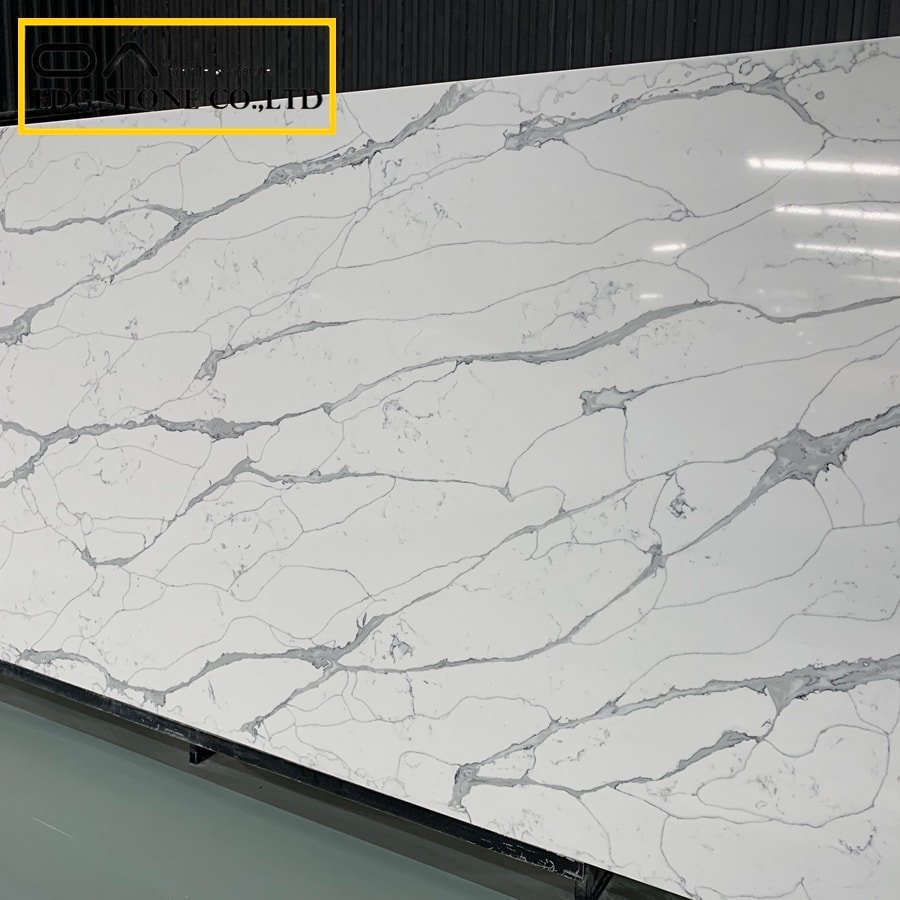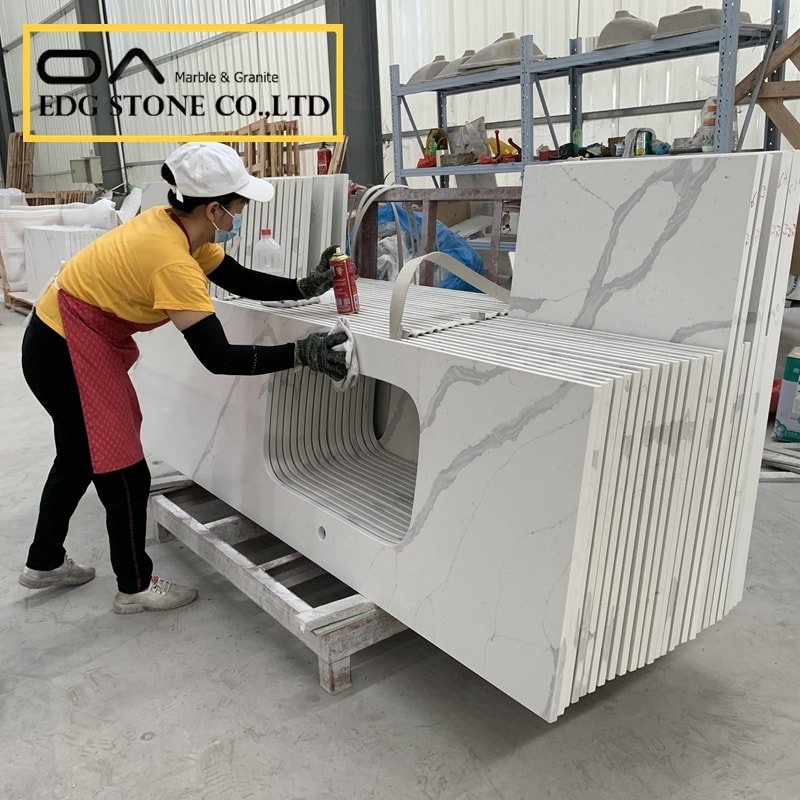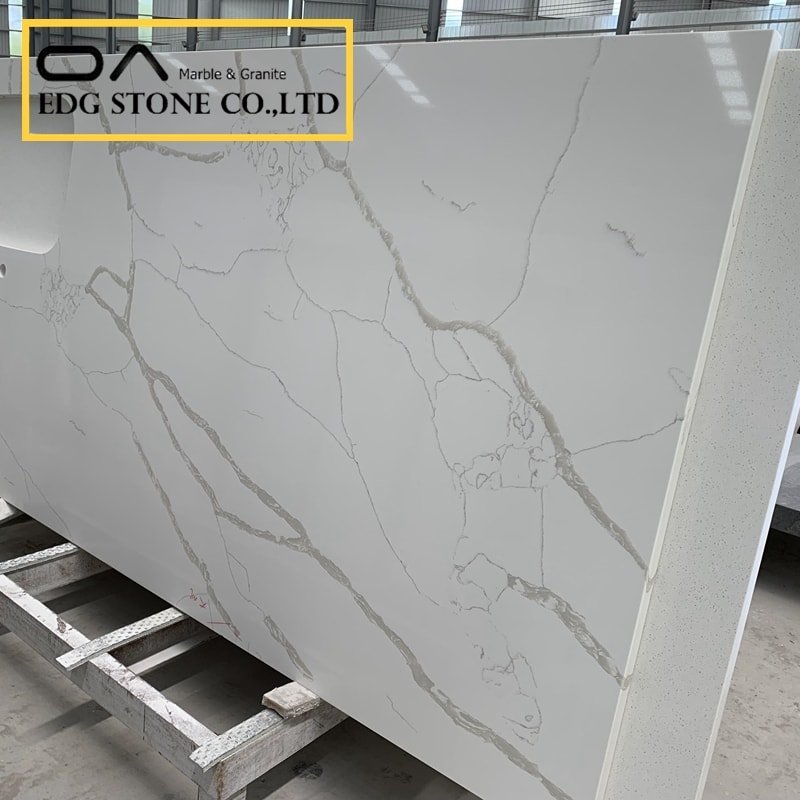Quartz stone slabs should not be unfamiliar to everyone. Quartz stone has become the preferred surface material for green building decoration stone. It belongs to artificial stone. Because the plate contains up to 93% quartz sand, it is called quartz stone by quartz stone manufacturers. However, the current quartz stone market in my country is chaotic, and the price of quartz stone is also uneven. Some unscrupulous merchants even use calcium powder instead of quartz sand in order to improve their interests. Now someone should ask the editor, what is the difference between adding calcium powder to the plate and not adding calcium powder.
Everyone who has been exposed to everything knows that quartz stone has quickly occupied the decorative stone market with many advantages such as wear resistance, scratch resistance, high-temperature resistance, and anti-permeability. However, once calcium powder is added to the quartz stone plate, the quality of the plate will be greatly affected. The first thing that affects is the hardness of the plate. The hardness of the quartz stone plate is above Mohs’ hardness level 6, which is easy to be scratched for the sixth level plate; the other is the decrease in acid and alkali resistance; the other is the decrease in high-temperature resistance. Contact with high-temperature objects can easily cause the plate to burst.
How to distinguish the calcium powder in the quartz stone plate? In fact, the identification method is very simple. Everyone knows that a chemical reaction occurs when calcium contacts with acid. However, you can use oxalic acid or home toilet cleaner, or vinegar. If bubbles appear on the surface of the board, it means that the board contains calcium powder. Many merchants will conduct experiments for us before purchase, but after purchase, check the code on the back of the board, ask for the manufacturer’s warranty and acid and alkali resistance test, to avoid bad merchants from dropping the package during processing.









